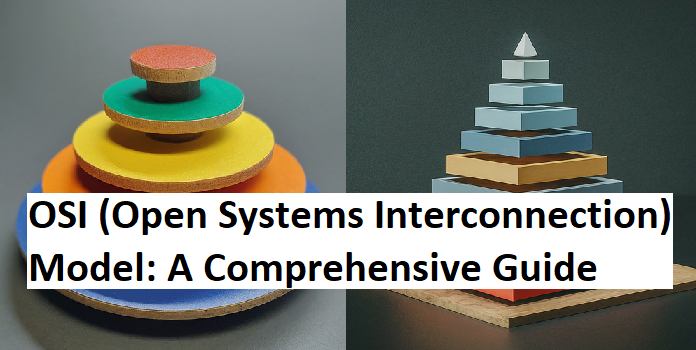OSI (Open Systems Interconnection) Model: A Comprehensive Guide – Learn about the OSI model, a conceptual framework that describes the functions and protocols involved in computer communication. Understand the seven layers of the OSI model and their roles in network operations.

OSI (Open Systems Interconnection) Model: A Comprehensive Guide
Understanding OSI
The Open Systems Interconnection (OSI) model is a conceptual framework that describes the functions and protocols involved in communication between computers. It divides the communication process into seven layers, each responsible for specific tasks. This layered approach simplifies the understanding and development of network protocols and applications.
The Seven Layers of OSI
- Physical Layer:
- Concerned with the physical transmission of data bits over a communication medium.
- Handles the electrical, mechanical, and procedural aspects of data transmission.
- Examples: Ethernet cables, fiber optic cables, wireless signals.
- Data Link Layer:
- Responsible for framing data bits into data packets and ensuring reliable transmission across a physical link.
- Handles error detection, correction, and flow control.
- Examples: Ethernet, Wi-Fi, PPP (Point-to-Point Protocol).
- Network Layer:
- Responsible for routing data packets across networks.
- Determines the best path for data packets to reach their destination.
- Examples: IP (Internet Protocol), IPv6, ICMP (Internet Control Message Protocol).
- Transport Layer:
- Ensures reliable end-to-end delivery of data.
- Handles flow control, error detection, and correction.
- Examples: TCP (Transmission Control Protocol), UDP (User Datagram Protocol).
- Session Layer:
- Establishes, manages, and terminates communication sessions between applications.
- Handles synchronization and checkpointing.
- Examples: NFS (Network File System), RPC (Remote Procedure Call).
- Presentation Layer:
- Handles data formatting and syntax.
- Converts data into a format that can be understood by the application layer.
- Examples: ASCII, EBCDIC, JPEG, PNG.
- Application Layer:
- Provides services to applications.
- Handles user interactions and network services.
- Examples: HTTP (Hypertext Transfer Protocol), FTP (File Transfer Protocol), SMTP (Simple Mail Transfer Protocol).
The Role of Each Layer
Each layer in the OSI model performs specific functions and interacts with the adjacent layers. This layered approach promotes modularity, flexibility, and interoperability between different network components.
The Benefits of OSI
- Standardization: The OSI model provides a common framework for understanding and developing network protocols.
- Modularity: Each layer can be developed and modified independently, simplifying network design and maintenance.
- Interoperability: The OSI model facilitates interoperability between different network devices and systems.
- Problem Solving: By understanding the different layers of the OSI model, network administrators can more effectively troubleshoot and resolve network issues.
Conclusion
The OSI model is a fundamental concept in networking. By understanding the functions and interactions of each layer, network professionals can design, implement, and maintain efficient and reliable network infrastructures.